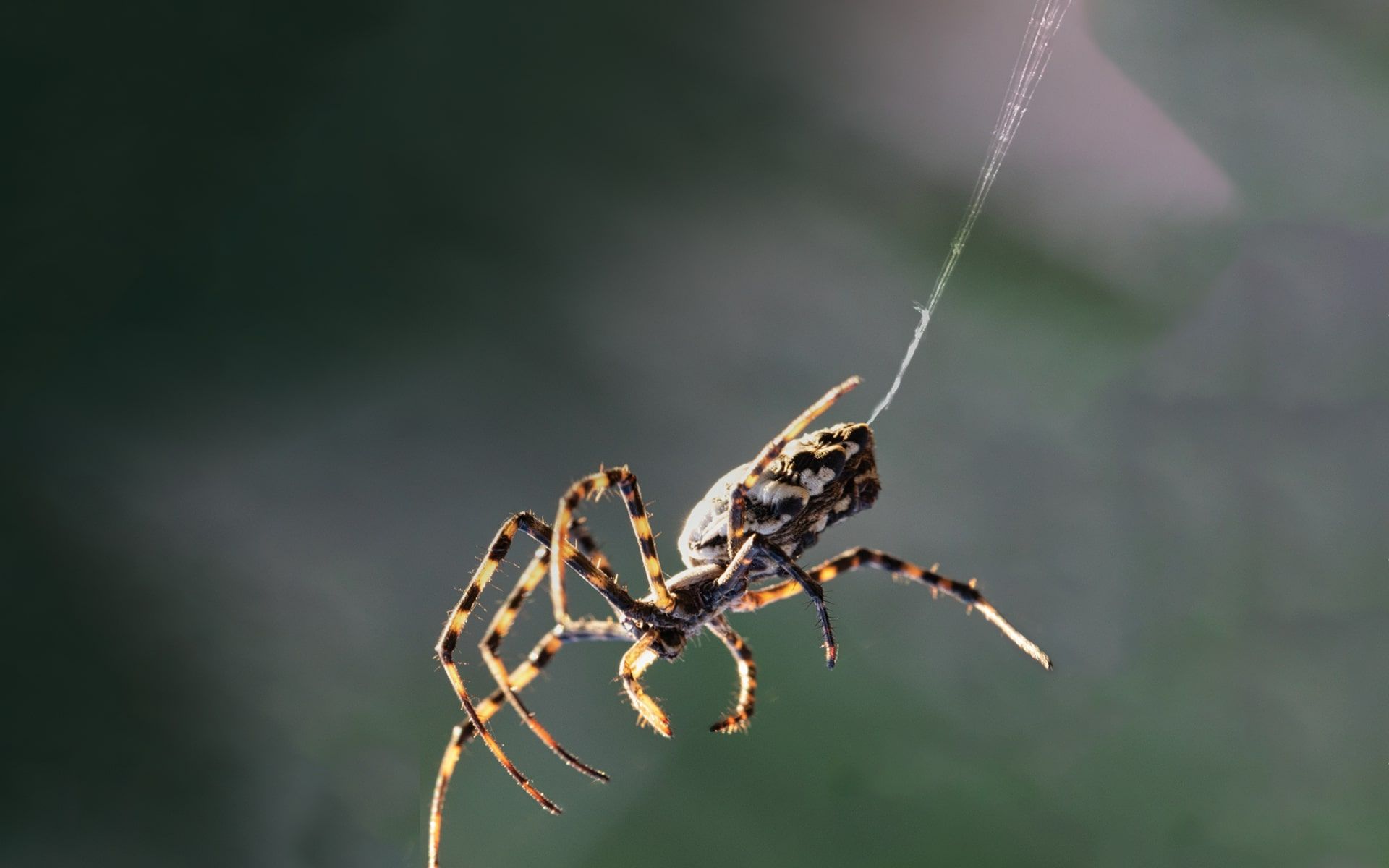Is That a Spider Riding a Balloon?

In 1832, 100 km off the coast of Argentina, Charles Darwin observed numerous tiny crimson spiders, sized 2-3 mm, riding the breeze from the sea and then sticking onto the ropes and sails of the HMS Beagle, the ship on which he was touring around the world. He wondered how it would be possible for so many spiders to reach a vessel as a group that was very far from land. Darwin realized that these insects, which lived on land and did not have any apparent wings, were able to use tiny but extremely strong silk threads as sails or balloons to glide on wind.
These tiny insects could fly up to an altitude of approximately 4,000 meters using this method. The chemical processes involved in the production of the silk threads that are hardly visible to the eye, but are stronger than steel, are a mystery. While we are still unable to manufacture such advanced threads with all our technology, 45,000-50,000 species of spiders known to humankind can easily produce such threads with different characteristics in conformity with their nutrition, movement, and reproduction styles since the day they are created. They use these threads to set their traps for hunting, to build their nests, or moving around by hanging in midair. These diverse silk threads are synthesized from the amino acids in the special silk “laboratories” in the abdomens of spiders.
In order to find new habitats, these tiny spiders climb upwards until they reach the uppermost tip of a branch or leaf and start to release a silky thread like a kite in the direction of the breeze before they take off. They cling to these threads and start to glide through the air as if they are water skiing or paragliding. In this manner they can travel for hundreds of kilometers and, depending on air currents, they may reach altitudes of 500 meters or even 4,000 kilometers. The widespread explanation is that the dragging or lifting force of the wind can help the spider attached to such threads rise in the air. However, existing aerodynamic models fail to fully explain the ballooning mechanisms [1]. Another model proposed uses electric charges in the atmosphere to explain ballooning [2].
The miraculous thread that collects electricity
Amazingly, it has been found that spiders are equipped with the ability to detect electric fields and produce a thread that is charged by electric fields and operates similar to that of a battery. According to the research, the spider produces the special threads that are suitable for the ballooning effect with its sensitive receptors. The spider can also determine the wind direction and force with its mechanosensory hairs and eventually, electric driving force that is sufficient for ballooning is created [3].
In this case, physicists disagree over the main driving force affecting the silk thread: aerodynamic drag caused by the wind; or atmospheric electrostatic force. Based on Darwin's observations and estimates, the physical force required for ballooning used to be attributed to the aerodynamic drag at the wind speeds less than 3 meters per second since then, but the extent to which electrostatic forces contribute to the ballooning was never tested.
Several problems arise when only aerodynamic drag is used to explain the ballooning process. For instance, in some species, the spider spreads out several silk threads and glues them together to form a fan or web that functions like a balloon. Some other species of spiders are observed to hold on to silk threads separately in order to move around in light breezes. The effects of an electrostatic force repel these threads so that they do not stick to each other. There are also questions about how spiders can release silk threads for ballooning at high speeds despite low wind speeds.
When the mechanism of silk production is examined it is seen that an external force is needed in order to pull the thread out of the pores of the gland during their production. In this case, how is high acceleration, which is required for the initial take-off, achieved when wind speeds are low? Despite reports that thermal air currents and temperature gradations function as a driving force on hot days, ballooning has been observed also on cloudy and rainy days. Models that take into consideration all the conditions such as humidity, temperature, and wind speed have been made but there are still issues that need to be addressed.
Is the spider versed in physics?
The role of electrostatic forces in helping spiders take off has been suspected but has yet to be tested. Eventually, experiments conducted by scientists from the University of Bristol confirmed in a study that spiders both detected electric fields and used them to launch themselves into the air [4]. When they sense a suitable wind spiders climb to the tip of a leaf where the electric charge is highest. They then level their legs, raise their abdomens upward, and start to release the silk thread. As the thread reaches a sufficient length the electric charges of the atmosphere starts to pull. The counteracting force from the earth starts to push the non-conducting thread and thus causes the spiders to take off.
Electric field
The distribution of the electric field in the atmosphere is related to a number of biological systems. For instance, bumblebees can detect the electric fields between them and flowers. Honeybees can use electric charges to communicate within their hives. How widespread is the ability to detect and use electrostatic forces among the organisms living on land? The silk produced by spiders is known as a strong insulator; Michael Faraday used it for the first measurements of electrostatic charge, and it was found that this silk collected a net negative charge.
The next question is to ask how these electric fields are formed. The earth is loaded with negative electric charge and the upper parts of the atmosphere are loaded with positive charge due to thousands of storms that occur every day. This atmospheric potential (voltage) gradation between the earth and the sky exists also on sunny days, albeit at a lower degree compared to stormy days. This event can hardly be brushed over as a simple flight of spiders as it involves more wise purposes than meets the eye.
Scientists have discovered that a spider can sense electrostatic forces and determine whether there are suitable conditions for take-off, and even control its altitude during flight, thanks to the special receptor hairs on its legs (trichobothria). The mechanisms involved in adjusting the thickness and length of the thread through the opening and closing of the silk-secreting nozzles, preparing the amino acid mixture in the correct sequence, and releasing the mixture, which is initially in a liquid form but hardens upon contact with air, are so complex that they cannot be found even in modern nylon yarn production plants.
Tens of parameters, such as the ones listed above, have to be created thoroughly, at the perfect time, in the required quantities, in the required order, and without fail in order for spiders to travel through the air using a parachute- or sail-like system, which they perform as if they were specially trained for that. There are such knowledge, power, will, and wise purpose involved in all these activities that they cannot be attributed to mere chance.
References
- Humphrey J.A.C. (1987). Fluid mechanic constraints on spider ballooning. Oecologia. 73: 469–477.
- Gorham, P.W. (2013). Ballooning spiders: the case for electrostatic flight. Archiv, archiv:1309.4731v, arxiv.org/abs/1309.4731.
- Morley, E.L. and Robert, D. (2018). Electric Fields Elicit Ballooning in Spiders. Curr Biol. 28(14): 2324–2330.e2
- Ibid.









